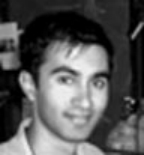Department of Chemistry, University of California, 105 Lewis Hall, Berkeley, CA 94720-1460, U.S.A.
e-mail: raghu76@uclink.berkeley.edu
URL: http://chem.berkeley.edu/people/faculty/groves/groves.html

| Raghuveer Parthasarathy and Jay T. Groves
Department of Chemistry, University of California, 105 Lewis Hall, Berkeley, CA 94720-1460, U.S.A. e-mail: raghu76@uclink.berkeley.edu URL: http://chem.berkeley.edu/people/faculty/groves/groves.html |
 |
Spatial organization of proteins is an emerging theme of broad significance in cell recognition and signal transduction. Cells from the immune system and nervous system, among others, engage target cells through highly organized patterns of proteins that assemble at the intercellular synapse. Though still controversial, there is mounting evidence indicating that specific synaptic patterns correlate with cellular activation. We are exploring the physical mechanisms behind synaptic pattern formation at intermembrane junctions in an effort to elucidate their role in cell recognition and signaling. The fundamental problem we address is the collective interaction of populations of receptors and ligands in apposing lipid bilayer membranes. In order to address this problem experimentally, we have initiated development of a totally reconstituted inter-membrane junction between a supported membrane and a second membrane patch, which is deposited from a giant vesicle. In corporation of different fluorescent probe lipids into each of the two membranes enables a variety of fluorescence imaging capabilities which we employ to obtain both lateral and nanometer-scale topographical information about the junction. Intermembrane resonance energy transfer and optical standing wave interferomtry will be discussed.